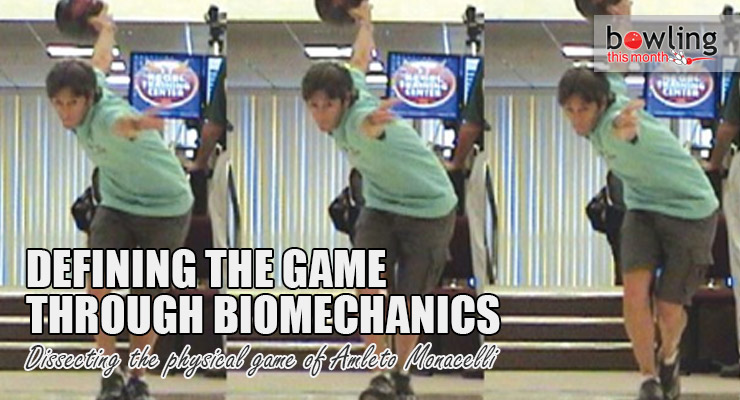Article Contents
- 1. Biomechanical terms
- 1.1. Forearm supination / pronation
- 1.2. Wrist flexion / extension
- 1.3. Wrist ulnar deviation / radial deviation
- 1.4. Elbow flexion / extension
- 1.5. Trunk lateral flexion
- 1.6. Shoulder extension / flexion
- 1.7. Shoulder adduction / abduction
- 1.8. Trunk flexion
- 1.9. Trunk rotation
- 1.10. Knee flexion
- 2. Amlelo’s setup
- 3. Describing Amleto’s swing start biomechanically
- 4. Describing Amleto’s swing biomechanically
- 5. Describing Amleto’s release and follow through biomechanically
- 6. Conclusion
- 7. References
Note: This article is only available to Bowling This Month subscribers.
This month, I want to introduce biomechanical terminology to readers and describe Amleto Monacelli’s physical game with these terms. Amleto, who has won 19 PBA titles (ranking 14th) and was named PBA Player of the Year twice, recently trained with us at the Kegel Training Center in preparation for the Pan American Games. Bowling has been an official Pan Am Games sport since 1991.
Since Amleto’s visit, I have reflected on how the use of biomechanical definitions could more accurately articulate the movements and positions of the physical game. Biomechanical terminology can provide coaches and players with a more extensive professional language. Specifically, with the standardization of terms, coaches and players can achieve a shared language to describe the physical movement of all bowlers, from beginners to elite players. Moreover, with the use of biomechanical concepts, coaches can more accurately test movement relationships and performance outcomes.
To begin, I present a number of important biomechanical definitions to help readers learn the appropriate language. After this introduction, I discuss Amleto Monacelli’s physical game utilizing these terms to help coaches and players understand the implementation of the expressions.
Biomechanical terms
Forearm supination / pronation
The neutral position for the forearm is the thumbs up position. When the hand and forearm face the ceiling, the forearm is rotated to approximately 90 degrees of supination. Conversely, when the forearm faces down, it is in approximately 90 degrees of pronation. According to both the American Medical Association (AMA) and the American Academy of Orthopaedic Surgeons (AAOS), the normal range of motion (ROM) for both forearm supination and pronation is 80 degrees.
Wrist flexion / extension
The neutral (0 degree) position of the wrist is the fingers straight and the hand aligned with the forearm. Flexion at the wrist involves movement of the palm of the hand toward the palm side of the forearm. In colloquial bowling speak, this has historically been referred to as cupping the ball. Wrist extension is moving the fingers and palm away from the palm side of the forearm. Extension is ...
Already a premium member? Click here to log in.


 (Only
(Only 